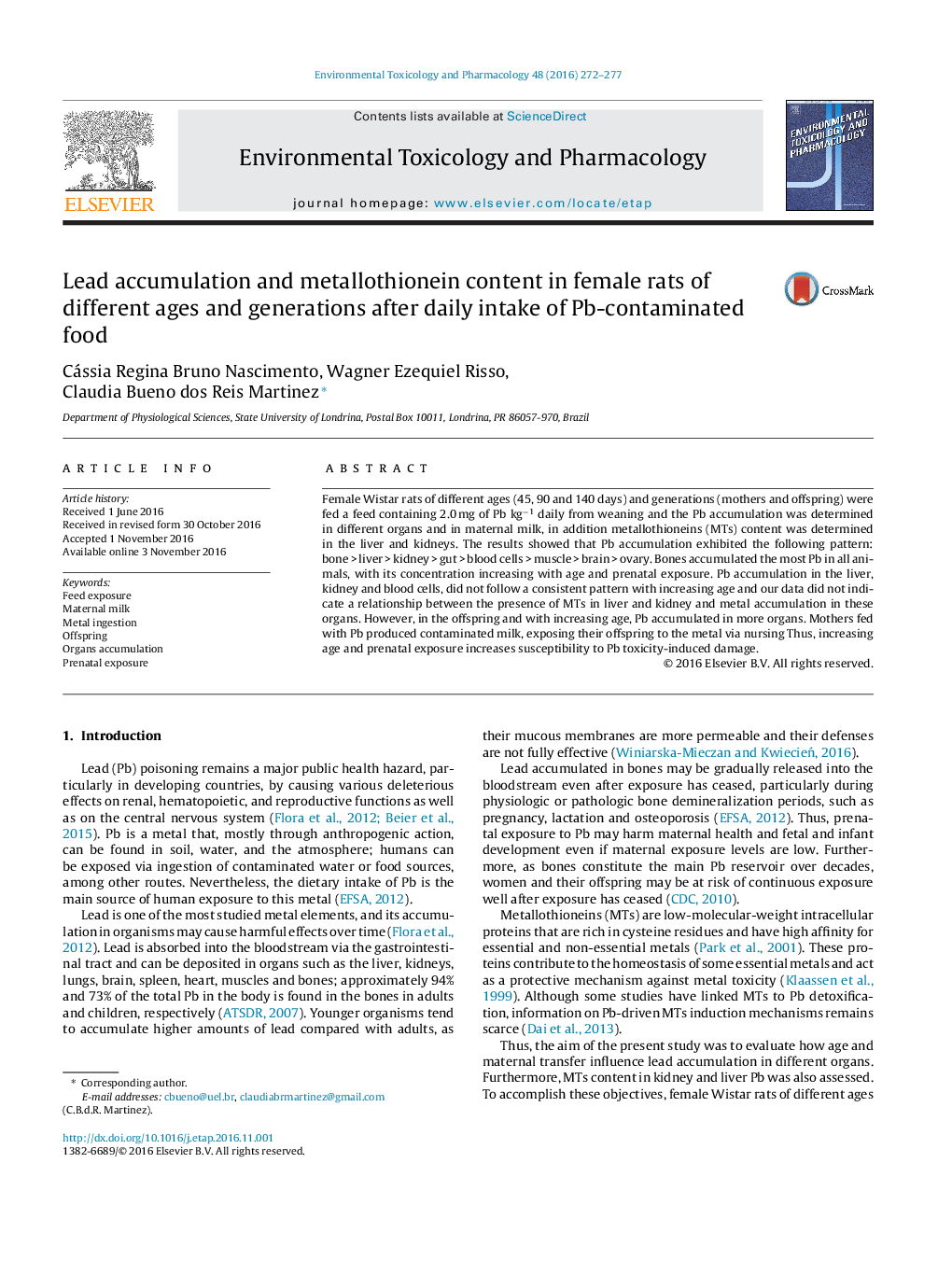| Article ID | Journal | Published Year | Pages | File Type |
|---|---|---|---|---|
| 5559918 | Environmental Toxicology and Pharmacology | 2016 | 6 Pages |
â¢Female rats fed a feed with Pb daily from weaning until 45, 90 and 140 days old.â¢Offspring fed feed with Pb from weaning until 45 and 90 days old.â¢Pb accumulation: bone>liver>kidney>gut>blood cells>muscle>brain>ovary.â¢Pb in bone increased with age and prenatal exposure.â¢In the offspring Pb accumulated in more organs.
Female Wistar rats of different ages (45, 90 and 140 days) and generations (mothers and offspring) were fed a feed containing 2.0 mg of Pb kgâ1 daily from weaning and the Pb accumulation was determined in different organs and in maternal milk, in addition metallothioneins (MTs) content was determined in the liver and kidneys. The results showed that Pb accumulation exhibited the following pattern: bone > liver > kidney > gut > blood cells > muscle > brain > ovary. Bones accumulated the most Pb in all animals, with its concentration increasing with age and prenatal exposure. Pb accumulation in the liver, kidney and blood cells, did not follow a consistent pattern with increasing age and our data did not indicate a relationship between the presence of MTs in liver and kidney and metal accumulation in these organs. However, in the offspring and with increasing age, Pb accumulated in more organs. Mothers fed with Pb produced contaminated milk, exposing their offspring to the metal via nursing Thus, increasing age and prenatal exposure increases susceptibility to Pb toxicity-induced damage.
